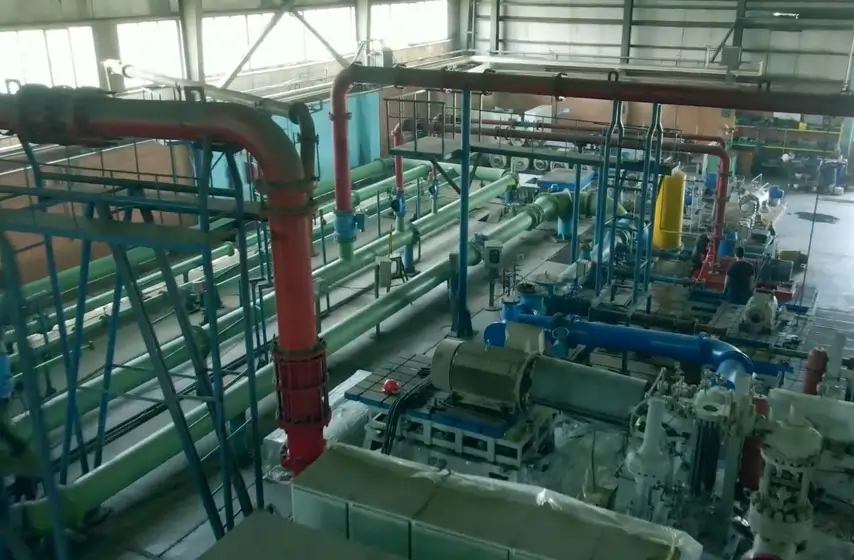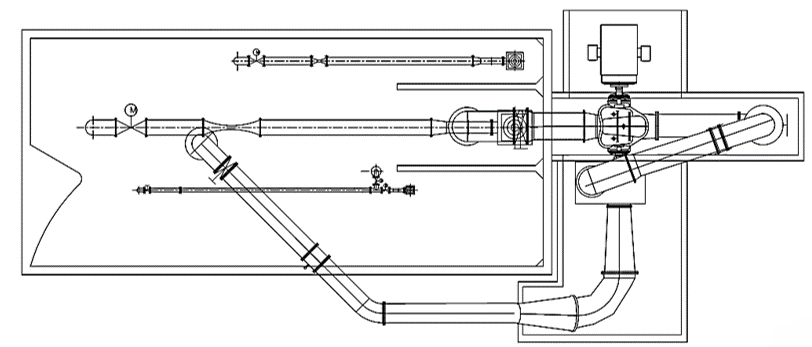All pumps pass through a strict inspection and performance test before ex-works shipment
The line of the pump test facilities, carry out performance tests in order to satisfy the customer’s demands and to give the best quality assurance for all products
All of the stored performance data are contributed to our current and future R&D activities

Hydraulic Test Laboratory
Once the fabrication of the pump is completed performing the performance and Mechanical running tests are necessary. The structure and arrangement of available test beds in the laboratory is depended to type and complexity of pump and varies from test beds for simple pumps to test beds for huge and sophisticatedpumps as some of them are fixed and some are portable
Also, both of closed and open system test facilities are available based on type of pump For example, the pump is mounted next to a pool with depth of 8 meter that make the open loop test feasible
In order to measure and assess the operating behavior of pumps, a number of characteristic quantities must be measured or calculated from the measured values. This ensures that the following quantities can be determined during the performance test: flow rate, head, power input, speed, drive rating, NPSH and, where applicable, temperatures
PETCO lab is capable of executing test for pumps up to 5000 KW with voltage 6.6KV,6KV,3.3KV, 400V, also can perform the test of pumps by frequency converters (VFD) with a capacity of 55,160,500 kW so the pumps can be tested with rotating speed up to 3000 rpm. In addition to that PETCO lab has the capability to test pumps with up to 20000 M3/h flow rates
The measuring instruments used for acceptance tests must meet stringent precision requirements and must undergo official and in-house calibration (repeat calibration cycles recommended in DIN EN ISO 9906). These precision requirements are defined by the test class of the acceptance standard that is used
Pump pressure measurement can be computed by measuring the pressure difference between discharge and suction plus dynamic head with differential pressure transmittal gage up to 250 barg
The flow rate is measured using some flow measuring devices having the specified stabilization depend on type of system (open or close) as follows
Electromagnetic flow meter
Venturi tube or venturi nozzle
Orifice plate
Following standards are used based on flow rate measurement method
The Standard ISO 5167-1 is used for rated flow measurement based on pressure difference method
The Standard ISO 1438-1 is used for sharp overflow
The Standard ISO 9104 is used for Electromagnetic flow meter
Electromotor power consumption is measured by power analyzer system or volt meter and current meter
:Lab Facilities
This test rig is open circuit. Pool volume capacity is 1000〖” m” 〗^۳٫ It is used for vertical and submerged pumps and pump coupled with turbine that their flow capacity are more than ones using in closed circuit

This test rig arrangement includes 2 separate test beds for simultaneously testing two pumps and is applicable in the case of single/multi stage, double suction/side-side pumps. Regarding to design of this rig, the allowable flow range is limited to 1500 (m3/hr) and pressure range up to 25 (bar). Flange size from 100mm to 300mm are available

This test rig arrangement includes 3 separate test beds for simultaneously testing three pumps and is applicable in the case of single/multi stage, End suction/top-top/horizontal in-line pumps. Regarding to design of this rig, the allowable flow range is limited to 20000 (m3/hr) and pressure range up to 40(bar). Flange size from 150mm to 1000mm are available

This test rig arrangement includes 4 separate test beds for simultaneously testing four pumps and is applicable in the case of single/multistage, End suction/top-top/horizontal in-line pumps. Regarding to design of this rig, the allowable flow range is limited to 1500 (m3/hr) and pressure range up to 200(bar). Flange size from 32mm to 400mm are available
